
Anger is a powerful emotion – but one that both clients and therapists can struggle to address. Art provides a helpful tool for both expressing and containing anger in therapy. Sigal Govrin LPC, ATR-BC has written a guest post about understanding anger, as well as ways to explore it through art.
By Sigal Govrin LPC, ATR-BC
I don’t know about you, but I have had an interesting relationship with anger. I believe for me it started in childhood where I witnessed my mother fear this emotion and when I expressed it myself, there was a very strong response from my father to “NOT upset your mother!” The confusing thing was that I saw my father get angry and had an older brother that could express it freely. But for whatever reason it was wrong for me to be angry. It became second nature to push that emotion down and find other ways to soothe or detach from those “bad” feelings. This relationship to anger followed me throughout my adolescence and into early adulthood where it was hard to form boundaries. My main response was to be nice and pleasant – otherwise “something bad would happen.”
It first began to change around graduate school when I was training to be a young art therapist. Emotions were all valid in this context, and I learned how one can “sublimate” anger and channel it into a healthy form of expression. However, at this point this was an intervention for “other” people and not me since “I didn’t feel anger.” It took me years, learning about trauma responses, cultural influences, and understanding that my “irritation” was also a sign of anger, that my relationship began to shift. But how many of us have a similar story to this and where exactly does this interpretation of “bad anger” come from?
These are things I now know about anger:
- It is a survival response to feeling unsafe and needing protection.
- It is a secondary emotion. Oftentimes what we truly feel underneath is less anger and more hurt, injustice, unfairness and fear.
- It can be influenced by childhood (this I knew), but gender roles play a part in expression.
- Culture and society impact our relationship to this emotion.
- Anger is a feeling, not a behavior. Validating it is not dangerous.
- Anger is a natural human emotion and we cannot get rid of it!
These are only some examples of why this emotion is so misunderstood. I know for me I was taught that being nice was important. So as an adult cis-woman I still at times fear being seen as aggressive if I express my opinion too strongly. I worry my anger expression won’t be perceived as assertive as my male counterparts.
But enough about why this formed… What do we do about it now? How do we shift our relationship to anger so we can tap into its true purpose, which is to protect and guide us to set boundaries and express our needs? First we need to know where we stand. Do I feel safe expressing anger? Do I see it as good, bad, dangerous, or powerful?
Here are some art directives to start the process:
1. Draw your anger using only lines, shapes and colors. (We need to see where we currently are to know where we want to go) *see example below
2. Draw what is underneath your anger. (This taps into the secondary emotion part)
3. Draw your anger volcano. (Do you express it quietly, hold it in, push it down or let it erupt?)

The red circle represents anger. It is solid and bold. Around it is warmth to soften it up. Encompassing the circle in blue is discomfort especially when setting boundaries with certain people. The smaller circles with stars represent smaller feelings like irritation or annoyance surrounded by self-compassion in green.
There are many ways to begin to explore our relationship to anger and avenues to express it in a safe and contained way. This is one of the many benefits of art expression and using art material to test out our feelings. I always like to use materials that feel smooth and create flow such as oil pastels, chalk pastels and even paint. The best part is that if we break them, they are replaceable and no harm was done!
Mindfulness is another tool to help us lean into a better relationship with Anger. New science has taught us that having self-regulation skills (deep breathing, grounding, lowering the heart rate) and calming down our nervous system, can give us more control over expression, behavior, and communication when angry. Does this mean we can’t express it loudly or fully? No, but it is important to learn what situations serve us when we are calmer and when yelling is helpful.
Mindfulness practices also allow us to identify where we feel anger in the body. This is important in discovering earlier signs of the emotion before it gets too intense and comes out in inappropriate ways. When I was still uncomfortable with my own anger it helped me validate my emotion by naming the more muted ones such as annoyance and irritation. For whatever reason they did not seem as bad or wrong so I could hear the messages and signals more clearly. Mindfulness also teaches us non-judgment. This was greatly beneficial when listening to my body’s messages and recognizing that something was not ok for me.
I hope this article helps you think about your own relationship to anger. Some of you may have completely different perceptions about the emotion and can express it freely! But if some of you relate to my own story, here are a few things to think about:
- First, check in with your own relationship with anger and ask yourself how you feel about it.
- Second, identify where those messages come from (caregivers, teachers, society, culture).
- Lastly, how do you want to feel about your anger moving forward?
For more information, Creative Healing Workshops (CHW) is offering a more in-depth look with their workshop “Understanding Your Anger: How to befriend, soothe, and channel your emotion” on November 14th, 6:00 -8:00pm Central. To register or for more information go to www.creativehealingworkshops.com/onlineworkshops
Sigal Govrin is a Licensed Professional Counselor in the state of Texas, and a Registered and Board-Certified Art Therapist. She graduated from Seton Hill University in 2013 with a Masters in Art Therapy, Counseling Specialization. Currently she works primarily with adult clients in Austin, TX at her private practice. Sigal is the co-founder of Creative Healing Workshops, where she offers online workshops focusing on normalizing emotions and helping others explore their relationships to those feelings through mindfulness practices and Art Therapy.
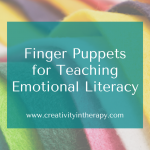
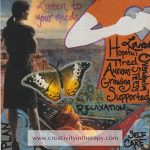
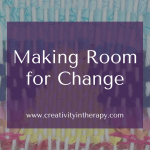
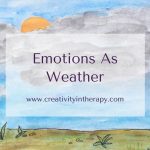
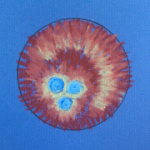
This blog is beautiful! Thank you so much for sharing, not only for my clients. This is something I need to explore within myself, as well.